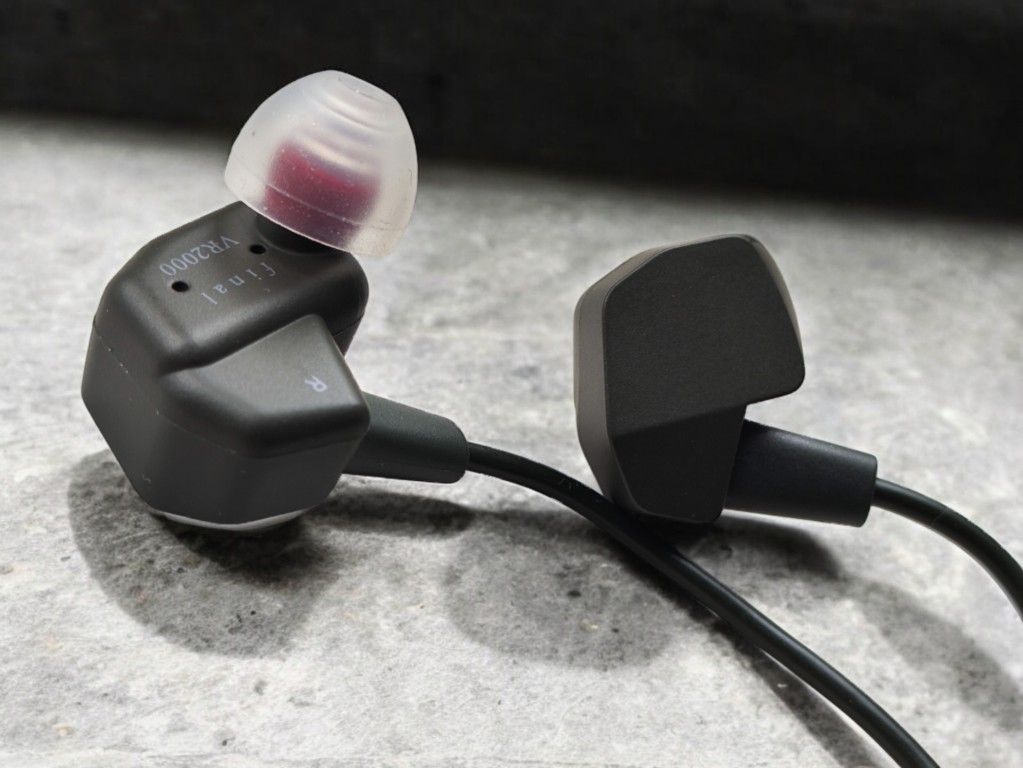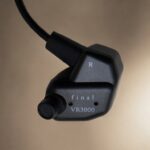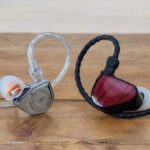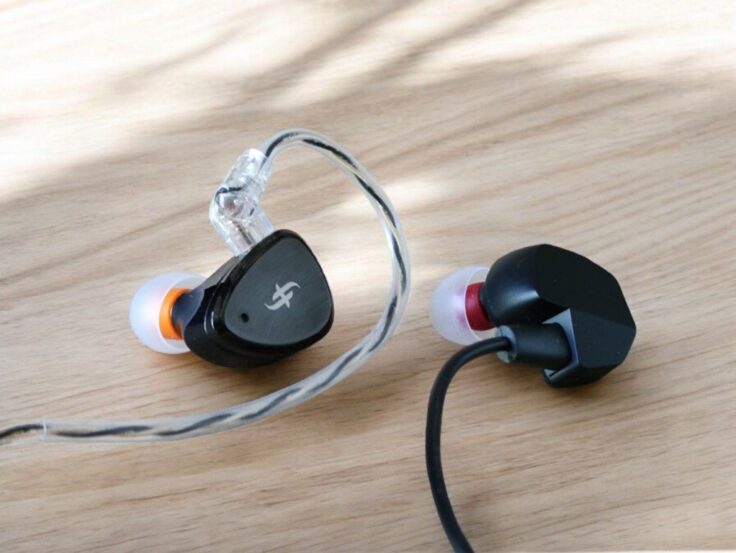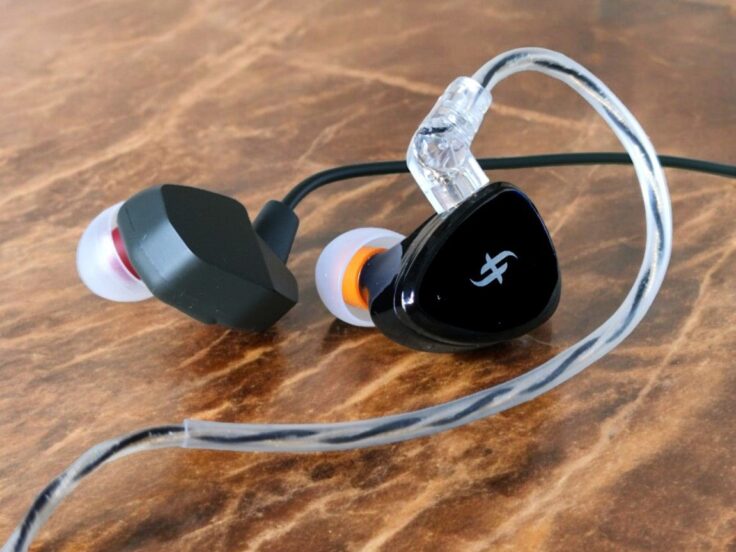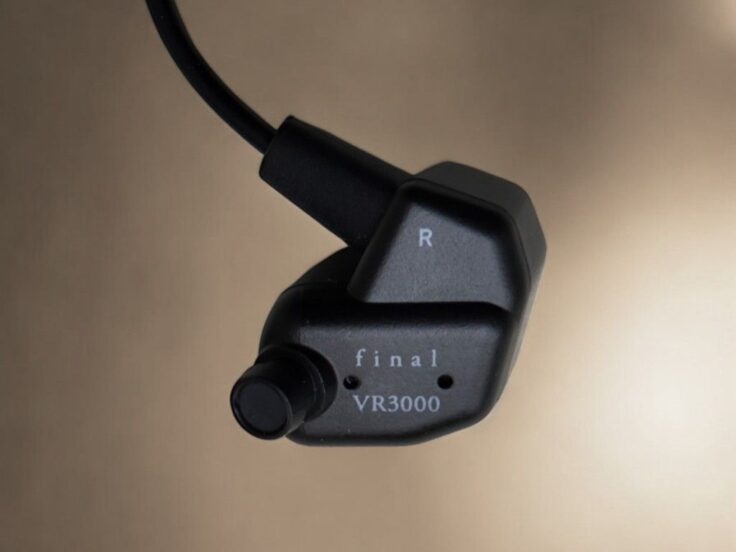The Final VR2000 is an IEM designed specifically for gamers, building heavily on its predecessor, the VR3000, which was the first in-ear monitor from Final targeting gaming and VR applications.
Apart from the color, both models share identical housing and cables. They feature Final’s 6 mm f-CORE DU driver, though their tuning differs significantly.
Final developed the VR2000 with the objective of further enhancing the VR3000’s gaming focused capabilities, emphasizing rapid response, clarity, and accuracy. These enhancements aim to elevate essential game audio cues, making them more noticeable and immersive for gamers.
MAIN TAKEAWAY
- Impressive imaging capabilities
- Crisp and clear highs
- Deep and tight low-end
- Polite bass and midrange presence
- Not the warmest timbre
- Light and comfortable
- Non-detachable cable with mic
THE VR-SERIES
Final’s VR series currently consists of three models. The VR3000 was the first, launched in 2021. Then came the VR2000 in 2023, and the latest edition, the VR500, was launched in early 2024. The VR500 is an ultra-compact ear-canal barrel-type IEM, similar to many of Final’s classic models. The VR2000 and VR3000, on the other hand, are standard-type IEMs that rest in your outer ear. The two have identical housings, except for the color, and look very much like Final’s A-series, which also uses the f-Core DU driver. The VR500, however, uses a different driver.
All three VR earphones have tangle-friendly, non-detachable cables with a mic and function button(s) attached and a 4-pole 90-degree 3.5 mm jack.
Even though the VR series IEMs can be used for all types of audio, they are all designed with a primary focus on delivering a natural soundstage and superior imaging. Combined with the microphone and function buttons, this makes them especially suited for use with gaming and VR equipment like Oculus Rift, Sony PlayStation 5, Microsoft Xbox Series X, and various other platforms.
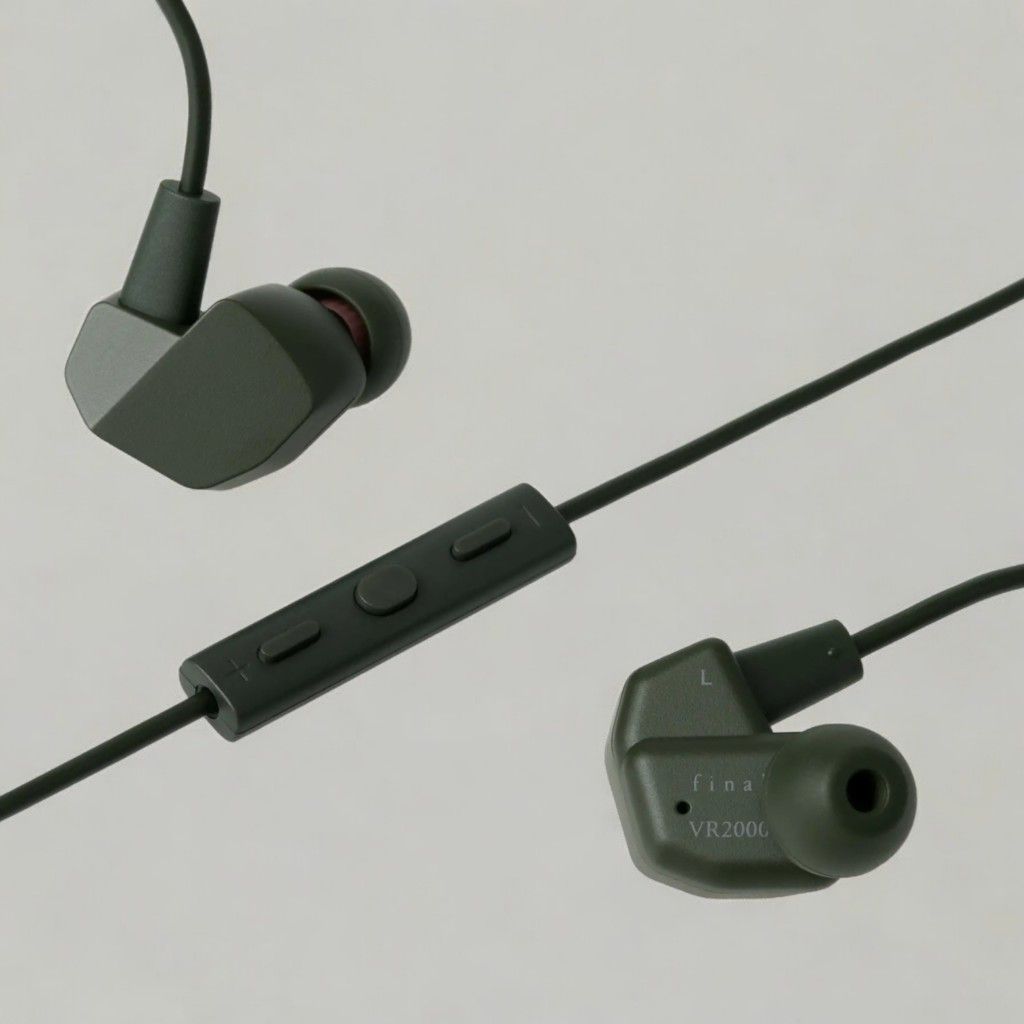
FINAL VR2000 SPECIFICATIONS
- Driver: dynamic driver (f-CORE DU)
- Housing material: ABS thermoplastic
- Sensitivity: 102 db/mw
- Impedance: 18 ohms
- Weight: 20 g
- Cable: 1.2 m non-detachable oxygen-free copper cable
- 3-button controller and microphone
- Angled 4-pole 3.5 mm jack
- Original E-type eartips in five different sizes
Price when reviewed: $69
The VR2000 was sent us free of charge for the purpose of this review with no strings attached.
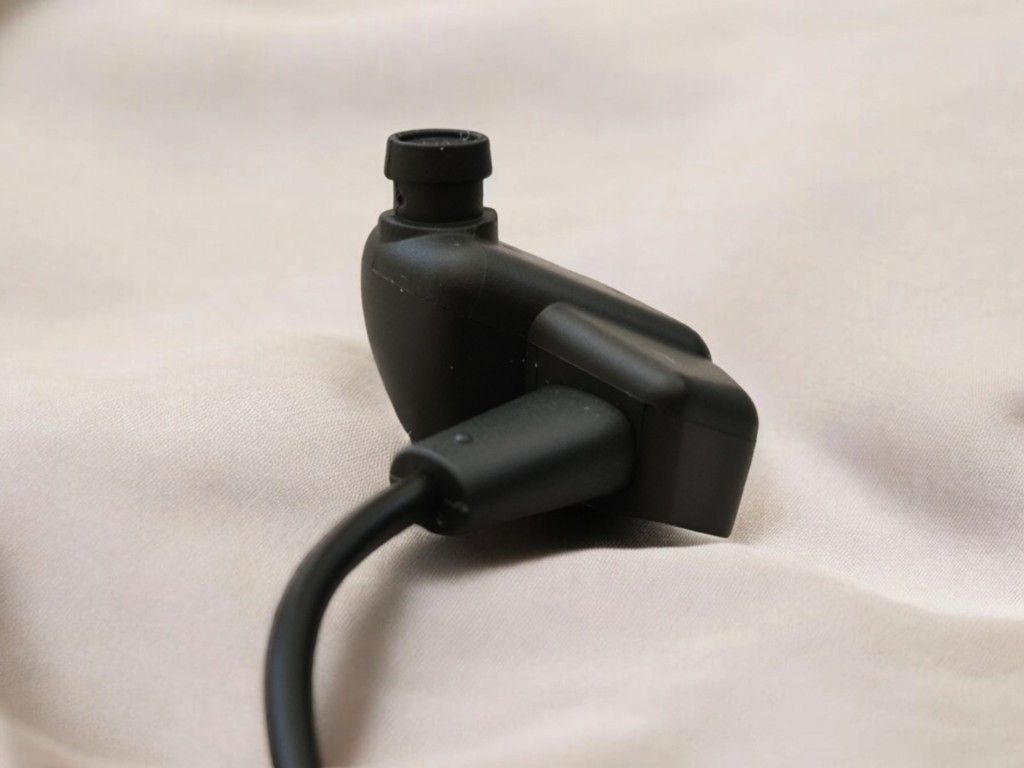
BUILD AND COMFORT
The VR2000 is made with price and weight in mind. It’s extremely light, with a non-detachable cable that includes a mic and a three-button control interface mainly for pausing media, answering calls, and adjusting volume. The cable is plain, and to make it sit tight over your ear, you need to attach the supplied ear hooks. I find the VR2000 to fit snugly in the ear; it’s one of the more comfortable IEMs I’ve encountered.
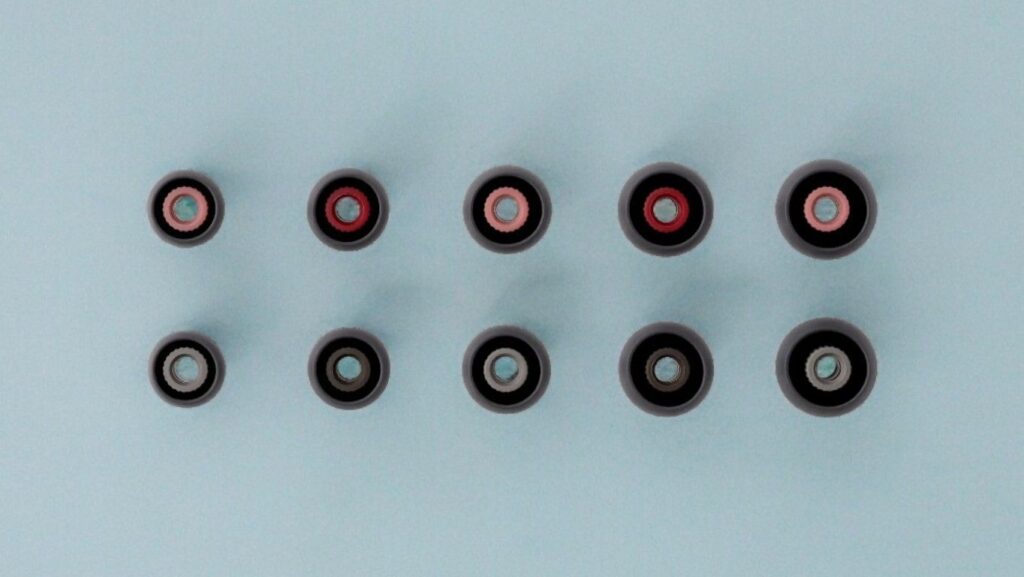
EAR TIPS
There are 5 sizes of Final’s own E-type quality ear tips included in the box, all in a matching dark gray color. You can of course use aftermarket tips if you prefer that. I personally always experiment with different types of tips, and even though the supplied tips are fine, my SpinTip CP100 tips fit me better. The sound is very similar, just a tad warmer, which I find to be a good thing.
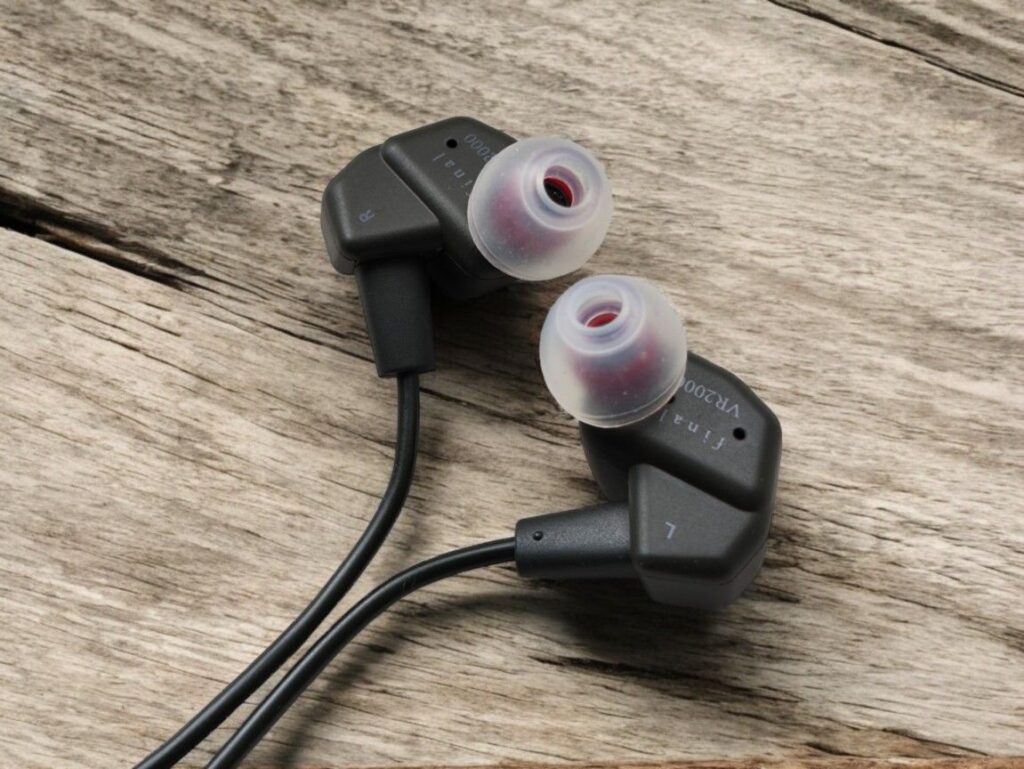
LISTENING IMPRESSIONS
GAMES AND MOVIES
I must confess I am not much of a gamer, but nonetheless, I tried out the VR2000 in various gaming scenarios and also watched some movies. The VR2000 has excellent imaging capabilities. Voices are clear, the low-end is very tight and snappy, the highs are crisp and detailed.
My son is a gamer, and was kind enough to give both the VR2000 and the VR3000 some hours of real gaming time. Usually, he’s using the Audio-Technica ATH-50x over-ear headphone. He did not find the VR2000 nor the VR3000 to be a step down in terms of audio quality and imaging; they were quite on par with what he was used to and he found the Final IEMs to work very well. He found the VR2000 and VR3000 to be quite similar in practical use.
MUSIC
Below are some track-by-track listening impressions, using my desktop rig: The Topping A90 amp and the RME ADI-2 DAC FS. I used the CP100 tips.
New Life Baby Paris by Mala
Starting out with some challenging bass, the VR2000 impresses right off the bat. The low end is great: deep, controlled, and not overly dominant. It’s a bit stronger with the CP100 tips than with the stock. The soundstage size and imaging capabilities are impressive.
Jambi by Tool
It’s a strikingly clean and tight presentation. The imaging is great. With the stock tips, though, I do miss some warmth, and there are some instances where sibilance is a bit too apparent. With the CP100 tips, there’s a very slight addition of warmth and reduced treble brightness that makes it sound very nice.
Feel Like Making Live! by Bob James Trio
This album is recorded binaurally and is excellent for testing spatial capabilities as well as musical performance. It’s a great jazz album, and it sounds terrific on the VR2000. The soundstage and imaging capabilities are impressive.
The Golden Age by Beck
The guitar is very crisp on this track. With the stock tips, I find it over the top, but with the CP100 tips it’s brought slightly down. A warmer sounding source also helps. Even though the treble can be a bit much if you turn up the volume, it’s very clean. The vocals are also quite bright sounding here.
The imaging is superb and the detail level is very high. The bass is excellent.
Lazarus by David Bowie
The bass is tight and extended, but not very voluminous. The imaging is excellent, and the detail level is impressive. The sound is neutral-to-bright and very tight but not extremely punchy, but there’s good microdynamics.
Come Away With Me by Norah Jones
The piano and guitar are very clear, the bass is polite but detailed, the vocals are polite but present enough. I’ve heard this track warmer.
Yoshimi Battles the Pink Robots by The Flaming Lips
The general presentation is also here neutral-to-bright, with a relatively polite bass presence but generally high detail level and good microdynamics. The treble is very crisp and clean, and the imaging is great.
Summer 3 – Vivaldi Recomposed by Max Richter
The VR2000 delivers a very three-dimensional presentation. The soundstage is wide, there’s excellent separation and positioning of instruments, and the layering is impressive. The strings sound airy and precise.
Brahms’ Symphony No.2 III by Paavo Järvi
This works fantastic with the VR2000, the large soundstage and imaging and detail makes it a joy to listen to.
Daddy Lessons by Beyonce
The soundstage is impressively large and the imaging is pinpointed and precise. The bass is very tight and controlled.
Aquela Muhler by Vinicius Cantuaria
I’m especially impressed with the bass, which is deep and very tight. The imaging is great, the vocals nicely present, the treble is clear but not too bright.
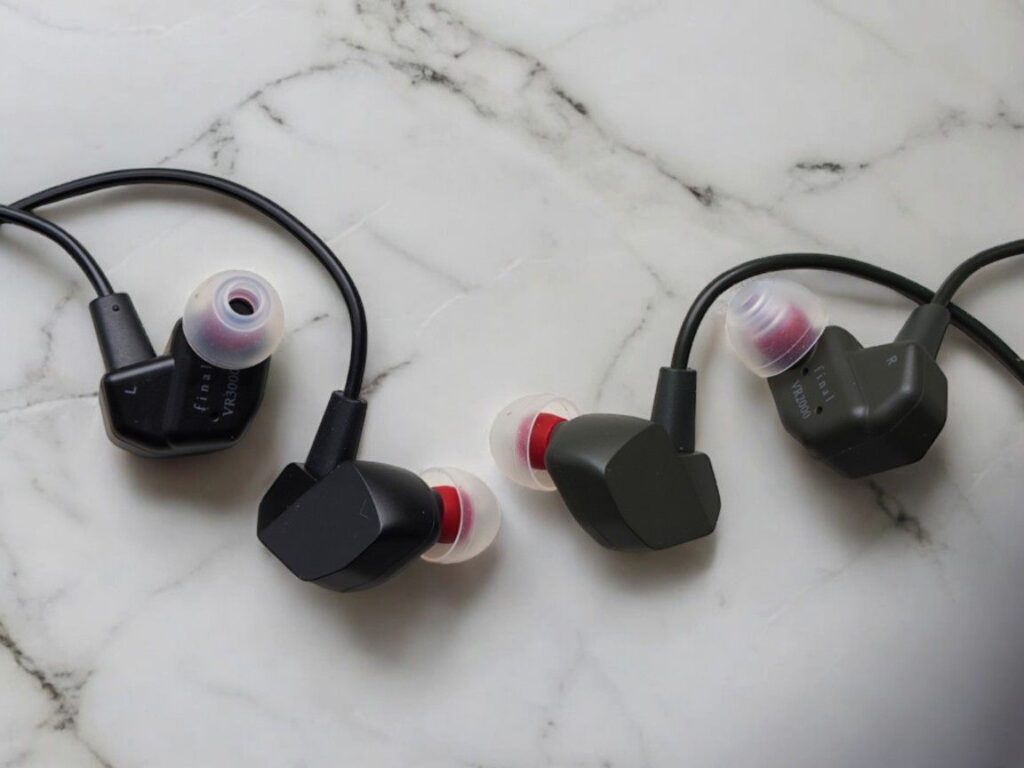
COMPARISONS
FINAL VR500 vs. VR2000
The VR500 is the smallest of the VR series siblings. It’s an ultra-compact barrel-type IEM, not a standard outer-ear full-size IEM like the VR2000 and VR3000.
Sound-wise, the VR2000 has more detail and better imaging. It’s clearer, cleaner, and crisper, while the VR500 has a more forgiving tonality and sounds fuller and punchier. That is, assuming you get a good seal, which can be more difficult with the VR500 than with the VR2000.
FINAL VR2000 vs. VR3000
The VR3000 is slightly more expensive than the VR2000, at $79 vs. $69. They look alike and have the same outer housing and driver.
Final tuned the VR2000 to be even more gaming oriented than the VR3000, and it certainly sounds clearer, crisper, and has even better imaging capabilities. However, it is also brighter and sharper, with less bass presence. If pinpoint imaging is the priority, the VR2000 is better; if you want more low-end rumble, the VR3000 might be the best choice. That being said, in practical use, the difference might not be very big for gaming, they’re both good.
SIMGOT EM6L vs. VR2000
The EM6L is designed with both gaming and music listening in mind, featuring five drivers per side: one dynamic driver and four balanced armature drivers.
It’s a light IEM, but still larger and heavier than the VR2000. It lacks a mic, but has a detachable cable, so it can be installed. The EM6L has notably better passive sound isolation.
The EM6L follows the Harman 2019 curve, while the VR2000 offers less bass, polite mids, and energetic highs. It has a brighter treble that’s clean but can be piercing, unlike the more rounded EM6L, which is better for music listening.
Both have a polite midrange, with the VR2000 featuring slightly crisper upper mids. The EM6L typically offers more bass punch and macro dynamics, though the VR2000 may be tighter overall.
They both boast excellent soundstage and imaging, with the VR2000 excelling in precision. In terms of detail retrieval and microdynamics, the VR2000 impresses me more, while the EM6L delivers punchier macrodynamics.
However, the VR2000 sacrifices some natural timbre for ultra clarity, and I generally find the tone of the EM6L nicer, depending on the track.
Full EM6L review here
- Buy on Amazon: Simgot EM6L
- Buy on Linsoul: Simgot EM6L
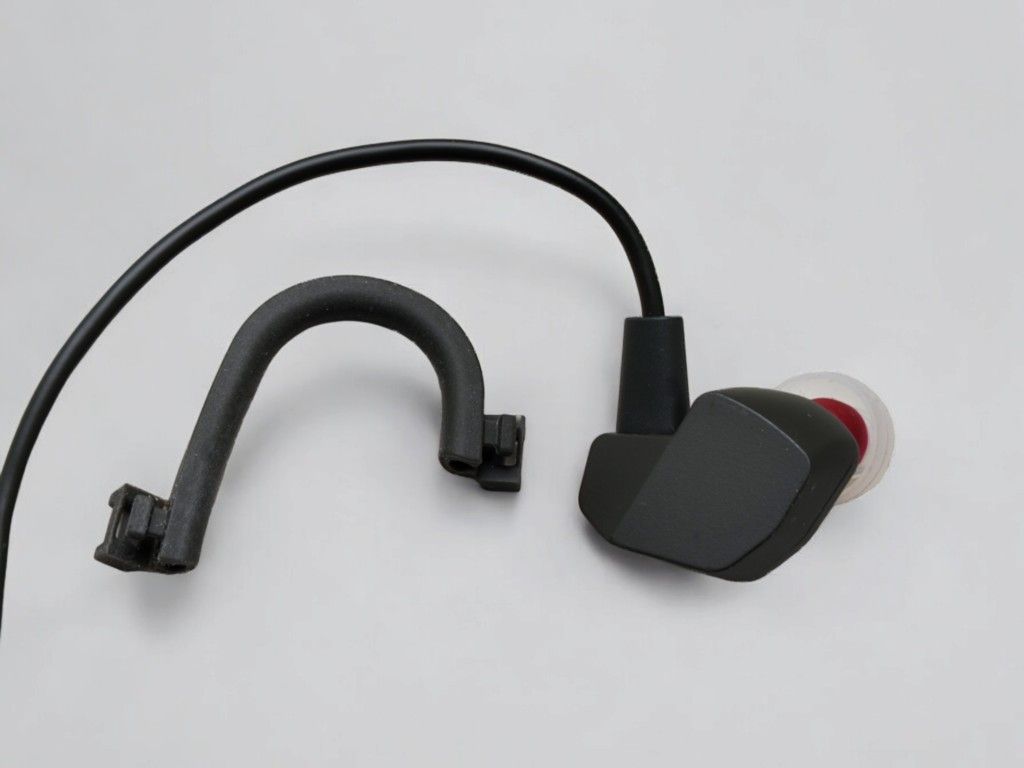
WRAPPING IT UP
Treble
The VR2000 features a bright treble that is impressively clean but can occasionally be piercing, especially if you play loud.
Midrange
The midrange is polite in quantity, with the upper mids being more present than the lower. It’s pretty clean, but lacks warmth and body.
Bass
The VR2000 provides a very tight and detailed bass. It is relatively polite in terms of quantity, significantly leaner than e.g. the VR3000, but the quality is superb.
Soundstage and Imaging
The VR2000 offers a large soundstage (for an IEM) and superior imaging performance with almost scalpel-like precision.
Detail, Dynamics, and Timbre
In terms of detail retrieval, the VR2000 impresses with its raw detail and excels in microdynamics. However, it lacks punch and strong macrodynamics. The VR2000 sacrifices natural timbre for ultra-clarity; there are warmer and more organic sounding earphones available.
AMPLIFICATION
I’ve used the Topping A90 and the RME ADI-2 DAC FS for my listening so far. It’s practical for me when reviewing, and it’s always good to have neutral and high-quality upstream gear. However, most people will use these earphones with phones, dongles, computers, or portable DAC/Amps.
The VR2000 is pretty easy to drive. Starting with my POCO F5 phone’s headphone output, it sounds quite okay but needs the volume set to 50%. The xDuoo Link2 Bal is very good, as is the THX Onyx USB C-dongle, both with the volume set to 40-50%.
The difference between the two dongles and my desktop setup is negligible.
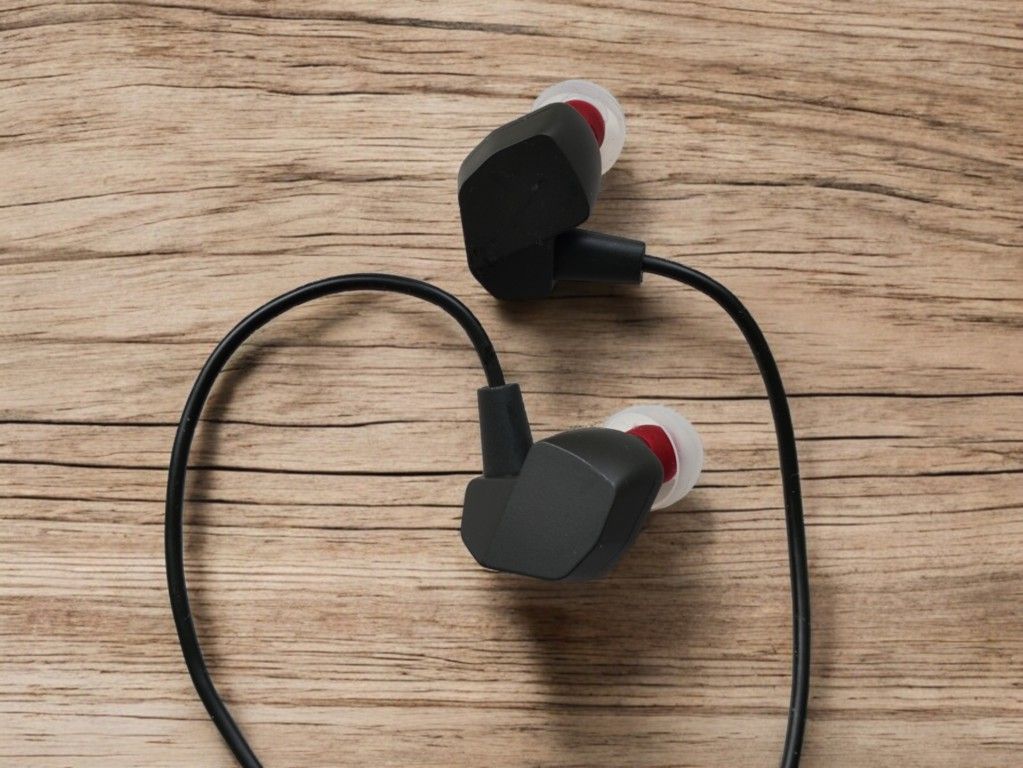
CONCLUSION
The VR2000 offers excellent imaging and a spacious soundstage. It features tight and precise bass, a polite yet clear midrange, and crisp, clean highs. While the VR2000 often is great for music, it can feel razor-sharp with certain tracks, and its midrange lacks a bit of organic warmth.
For gaming purposes, the VR2000 is a great choice, offering surgically precise imaging and clarity at a very reasonable price.
Purchase links:
- Amazon: VR3000
- Amazon UK: VR500 , VR2000 , VR3000
- Amazon DE: VR500 / VR2000 / VR3000
Final website on the VR-series
Any purchase you make on Amazon or Linsoul with any of our affiliate links will give us a small provision at no cost to you.
We only get a provision for items that are not returned, so there’s no incentive for us to recommend something that’s not good.
Linsoul : Headphones, Earbuds, Wireless Earbuds, Desktop DAC/AMP, Portable DAC/AMP, Digital Audio Players,
Amazon: Headphones, IEMs, Headphone Amplifiers, Home Audio or Anything else.
.
If you enjoyed this article or other content on The Headphoneer, you might consider leaving a small donation to keep this website up and running. No donation is too small. Thanks for supporting us!
If you like our work please follow us on Instagram, Facebook and Twitter , it will help us grow. Sharing is caring 🙂


